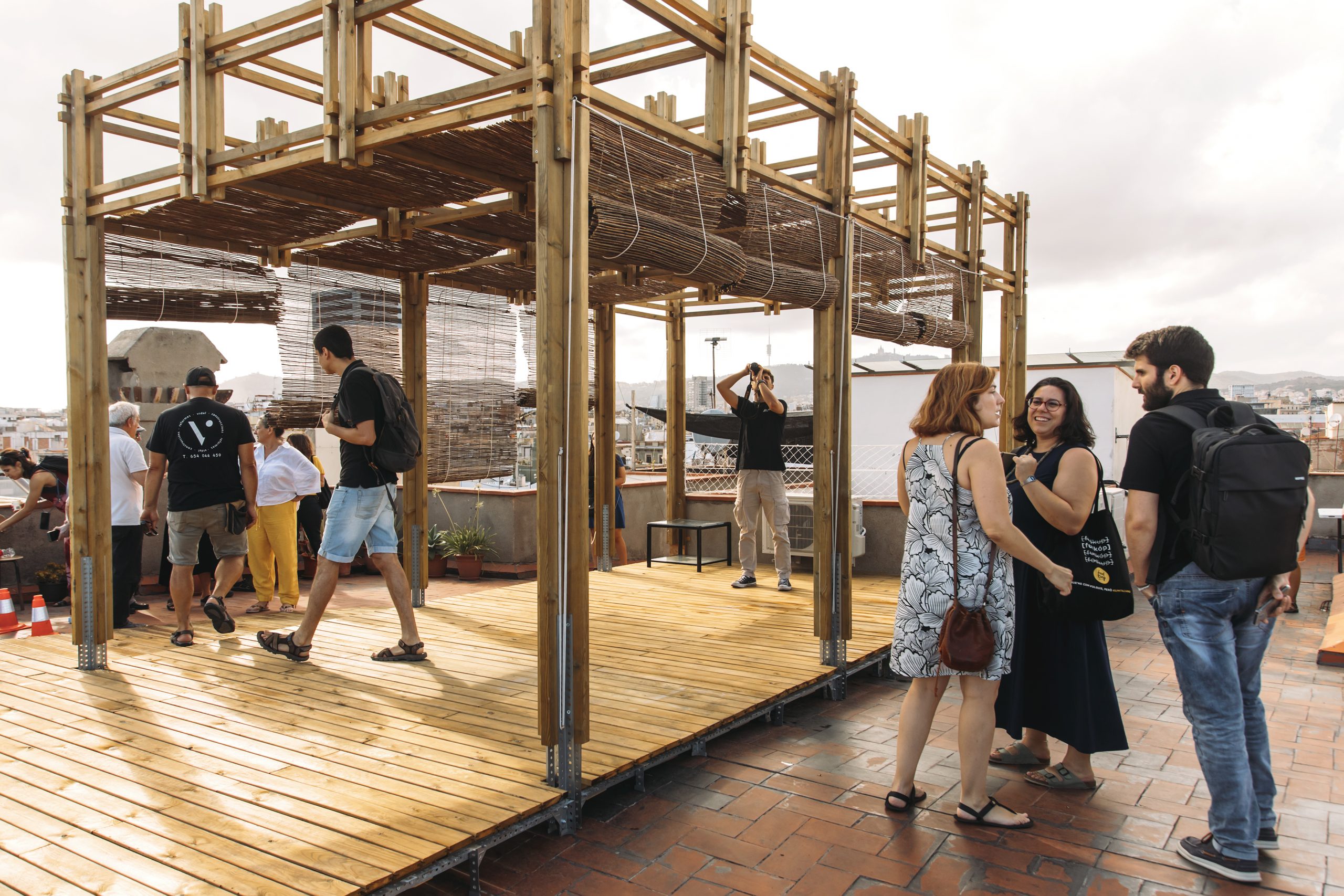
Building communities from the rooftops
We interview doctors Montserrat Simó and Ana Belén Cano, professors in the Sociology Department of the Faculty of Economics and Business at the University of Barcelona.
Doctors Simó and Cano carried out a project on community roofs, which consisted of the co-design of economic and sustainable prototypes to revive life on roofs, especially in stressed urban areas such as the Ciutat Vella district.
The project was carried out together with the Universitat Politècnica de Catalunya (UPC) and the third sector entity Oasi Urbà, and was the result of a call from Barcelona City Council and the La Caixa Foundation.
In this interview, doctors Cano and Simó reflect on the importance of these spaces in community life, especially in neighborhoods affected by gentrification and mass tourism, and we delve into a project that not only seeks the recovery of rooftops, but also the recovery of collective memory and lost community life.
What does the community roof project consist of?
Montserrat Simó (MS): It was a project that consisted of co-designing, together with the neighbors, an economic prototype, which was environmentally sustainable, with the aim of installing this prototype on the roofs of the neighboring communities in order to revive these areas. We wanted to bring back the community life that many of the residents miss and remember from when they were young.
Why is it important that these spaces exist?
Ana B. Cano (AC): We believe that these spaces are important especially in districts such as Ciutat Vella, which are areas stressed by processes such as tourism, gentrification, a high population density, with a fairly old housing stock, with reduced dimensions, etc. We think that the community roof is a space for collective use, but at the same time private, which facilitates social life in these areas. When we started talking to the neighbors, ideas came up like celebrating a birthday, the carnival and all kinds of activities that they couldn’t do at home because they didn’t have space. The roofs represent a meeting point in an area where it is difficult to gather in public space.
What benefits do community rooftops have for residents?
MS: A large part of the population of Ciutat Vella is aging. They have mobility difficulties to get down the street, or they feel insecure, or they don’t have access or they don’t know all the public facilities in the neighborhood. The community roof is a space in which you can feel protected, and can have an individual benefit, such as going to read the newspaper, or the magical benefit, which would be meeting the neighbors to make coffee upstairs the roof.
Barcelona was a city full of life on the rooftops.
AC: Yes, before the rooftops were full of life, baptisms, communions were celebrated… A lady told us that, during her youth, every weekend she went to the tents on all the rooftops, and that there she met the her husband The roofs were areas where the neighbors went to spread their clothes, talked to each other and the children played. Many years ago the roofs fell into disuse and became warehouses, and the younger ones have already seen them as a closed space or as a storage room.
Why choose the Ciutat Vella district to carry out your project?
MS: Through the Oasi Urbà entity, they told us that they had contact with the neighborhoods of Barceloneta and Raval. In Barceloneta it was very difficult. They were afraid that the proposal would further dignify their community, and that it would be another attraction. They didn’t want the rent to go up and bring in more tourists. On the other hand, in the Raval we did find more acceptance.
AC: To develop the project, we had to meet with the neighbors, see the roofs, go through the stairs… you enter people’s private sphere. And in some cases, there were misgivings. That was one of the challenges we had: we had to earn the trust of the communities.
Was it difficult to gain the trust of the neighbors?
MS: It was a project lasting a year and a half. Therefore, it is difficult to weave such an important value as trust in such a short time. We acted as a transmitting channel between the communities and the UPC team of architects. Plans were drawn up, a model was made, and dynamics were carried out to build these trusts. These are projects that require time and create spaces so that the residents can understand everything well.
What is the current status of the project?
AC: We delivered the project in June 2023. We are now looking for funding to do a second part of this project. We want to evaluate how the community dynamic was, and analyze the opportunities and drawbacks that arose.
More about doctors Montserrat Simó and Ana Belén Cano
The best invention in history?
Dr. Simó: Internet, with its pros and cons.
Dr. Cano: Penicillin.
What would you like to see in the future?
Dr. Simó: Less social inequalities.
Dr. Cano: A more socially just and empathetic world.
An advance from the future that scares you?
Dr. Simó: That which is capable of doing the worst of the human race.
Dr. Cano: Bad practices with artificial intelligence.
A reference?
Dr. Simon: My mother.
Dr. Cano: My grandmother.
What could be done to achieve equality between men and women?
Dr. Simó: Listen to us a little more and put yourself in our place.
Dr. Cano: Be willing to lose privileges in order to win rights and build a more balanced and fair world.
Transfer is important for…
Dr. Simó: So that all this knowledge is not locked away in a drawer.
Dr. Cano: Giving meaning to research and building better societies.

